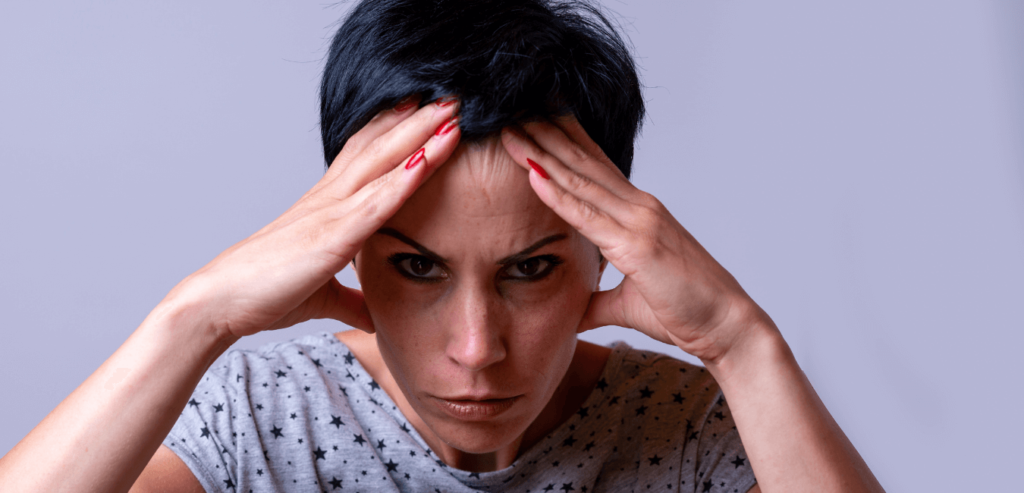Anxiety is a natural reaction to stress and can even be beneficial in some situations. It alerts people to danger and can help them prepare and pay attention. But for some people, anxiety becomes so overwhelming that it decreases their quality of life. That’s when it becomes one of the common anxiety disorders described below.
Anxiety disorders go beyond the fear and nervousness that many people experience when facing new or uncertain situations. The fear is out of proportion to the situation for those with an anxiety disorder. You may feel like you’re overreacting and know that your response doesn’t make sense. But your reaction is beyond your control. The symptoms of anxiety disorders may hinder your ability to function in everyday life.
How Common are Anxiety Disorders?
Anxiety disorders are the most common mental health condition in the United States. About 40 million Americans experience an anxiety disorder every year. And 30% of all adults experience any anxiety disorder in their lifetime. Anxiety disorders often begin in childhood or adolescence. But they also can appear later in life, especially when triggered by a traumatic experience.
5 Common Anxiety Disorders
There are many types of anxiety disorders. Below are the most common ones and their symptoms.
Generalized Anxiety Disorder
Generalized Anxiety Disorder is persistent and excessive worry about common occurrences and situations. The disorder affects 6.8 million adults, or 3.1% of the U.S. population, each year.
If you have GAD, you may find it difficult to control your worries about money, health, family, and work. Often, just getting through the day creates anxiety. The cycle of worry feels beyond your control, even when you’re aware that your anxiety is more intense than the situation warrants.
Physical symptoms also can accompany the ongoing worry and stress of GAD. These symptoms include restlessness, feeling fatigued, or problems sleeping. And when your anxiety reaches breaking point, you may have anxiety attacks.
Symptoms of Generalized Anxiety Disorder include:
- Feeling restless, wound-up, or on edge
- Easily fatigued
- Having difficulty concentrating or your mind going blank
- Being irritable and nervous
- Overthinking situations and being unable to let go
- Difficulty controlling feelings of worry
- Trouble sleeping or unsatisfactory sleep quality
- Muscle tension
- Sweaty palms
- Dry mouth
Obsessive-Compulsive Disorder
Obsessive-Compulsive Disorder is uncontrollable, reoccurring thoughts, obsessions, or behaviors that you need to repeat. More than 2.3% of the U.S. population has OCD.
If you have OCD, you may experience obsessions, compulsions, or both. Obsessions are intrusive and unwanted thoughts, urges, or mental images that cause anxiety. Compulsions are repetitive or ritualistic behaviors that you do in response to obsessive thoughts. Compulsions temporarily help ease the anxiety caused by obsessions. But the obsessions return, resulting in a vicious cycle of anxiety.
Obsessions and compulsions usually center around themes like:
- Washing and cleaning
- Counting
- Orderliness or symmetry
- Following a strict routine
- Demanding reassurance
Symptoms of OCD include:
- Fear of contamination or dirt
- Difficulty tolerating uncertainty
- Needing things orderly or symmetrical
- Aggressive or horrific thoughts about losing control and harming yourself or others
- Unwanted thoughts on taboo subjects
- Need for constant reassurance
- Excessive hand-washing
- Checking doors repeatedly
- Checking the stove to make sure it’s off
- Counting in patterns
- Performing a task a specific number of times
- Silently repeating a prayer, word, or phrase
- Arranging items to face the same way
- Eating food in a specific order
- Collecting or hoarding items of no value
Panic Disorder
Panic Disorder is a type of anxiety disorder that causes panic attacks. Panic attacks are sudden, intense feelings of overwhelming terror when there is no real threat of danger. Panic attack symptoms are different from those of other common anxiety disorders. They are usually more severe, occur out of the blue, and pass after about 10 minutes.
You can have a panic attack without having Panic Disorder. Panic attacks become a disorder when they occur regularly and unexpectedly. If you have Panic Disorder, you may live in fear of having a panic attack. You spend a significant amount of time worrying and changing your routine to avoid them. A Panic Disorder can greatly hinder your work and personal life.
Symptoms of panic attacks include:
- Fast heartbeat or heart palpitations
- Chest or stomach pains
- Shortness of breath
- Weakness or dizziness
- Sweating
- Trembling or shaking
- Headache or stomach ache
- Feeling of detachment
Post-Traumatic Stress Disorder
Post-Traumatic Stress Disorder can occur in people who experience trauma. Although people often associate PTSD with war veterans, the disorder can occur in anyone. It affects 3.5% of U.S. adults every year. Traumatic events may include war, terrorism, a natural disaster, abuse, rape, a serious accident, or a violent crime. They also could consist of less acute traumatic stressors that build up over time.
If you have PTSD, you may have disturbing and upsetting thoughts and feelings about your experience long after the traumatic event.
Symptoms of PTSD include:
- Memories, flashbacks, or nightmares of the traumatic event
- Negative mood changes
- Expressing negative beliefs about yourself or the world
- Dissociation and out-of-body experiences
- Avoiding thoughts, feelings, people, places, or other reminders of the event
- Sleep disturbance and lack of concentration
- Hypervigilance (increased alertness) or being started easily
- Reckless or self-destructive behavior
Social Anxiety Disorder
With Social Anxiety Disorder, social interactions cause significant anxiety. Social situations may cause you to feel self-conscious, embarrassed, or fearful of judgment from others. Social Anxiety Disorder is one of the most common anxiety disorders in the U.S., with 15 million, or 7% of, American adults having it.
Social Anxiety Disorder can cause you to avoid social situations where you don’t feel safe. You may have an extreme fear of public speaking, feel overwhelmed when meeting new people, or get nervous conducting seemingly common activities in public.
Social phobia may lead to you cutting yourself off and isolating yourself. These behaviors can also result in low self-esteem and even depression.
Symptoms of Social Anxiety Disorder:
- Fear of situations where you feel judged
- Intense fear of interacting with others
- Avoidance of things that make you the center of attention
- Intense fear in social settings
- Anxiety in anticipation of social events
- Fast heartbeat, trembling or sweating in social situations
Strategies to Help with Common Anxiety Disorders
No one strategy works for all common anxiety disorders. But a combination of specific strategies can help. At the Integrative Live Center, we offer a variety of evidence-based therapies and integrative healing approaches to help treat anxiety disorders.
Some of our strategies for helping with common anxiety disorders include:
- Cognitive Behavioral Therapy. Get to the root of self-sabotaging beliefs, thoughts, and actions and begin to replace them with healthier ones.
- Breathwork Therapy. Learn breathing techniques that can curb many anxiety symptoms and, over time, reduce episodes and severity.
- Mindfulness and Meditation Therapy. Become more present-focused, which can dissolve self-consciousness, anxiousness, and fear.
- Trauma-Informed Therapy. Get to the root traumas that contribute to anxiety disorders and begin to heal them.
- Nutrition Therapy. The foods you eat or don’t could worsen the condition, especially if you’re not getting adequate nutrition.
- Adventure Therapy. This method can be most effective for social anxiety because you’re active and learning to have fun socially.
- Medication. Prescribed medication can have a place in anxiety treatment. But you may find you need it less as you progress with the above strategies.
Contact ILC to learn more about getting help for your anxiety disorder.
Anxiety Disorders: Types, Causes, Symptoms & Treatments. Cleveland Clinic. (2021). Retrieved 20 December 2021, from https://my.clevelandclinic.org/health/diseases/9536-anxiety-disorders.
Generalized Anxiety Disorder (GAD) | Anxiety and Depression Association of America, ADAA. Adaa.org. (2021). Retrieved 20 December 2021, from https://adaa.org/understanding-anxiety/generalized-anxiety-disorder-gad.
Social Anxiety Disorder. Mental Health America. (2021). Retrieved 20 December 2021, from https://www.mhanational.org/conditions/social-anxiety-disorder#:~:text=Prevalance,early%20teenage%20years%20%5B2%20%5D.
Team, S. (2021). OCD statistics 2020: Facts about obsessive-compulsive disorder. The Checkup. Retrieved 20 December 2021, from https://www.singlecare.com/blog/news/ocd-statistics/.
What Is PTSD?. Psychiatry.org. (2021). Retrieved 20 December 2021, from https://www.psychiatry.org/patients-families/ptsd/what-is-ptsd




